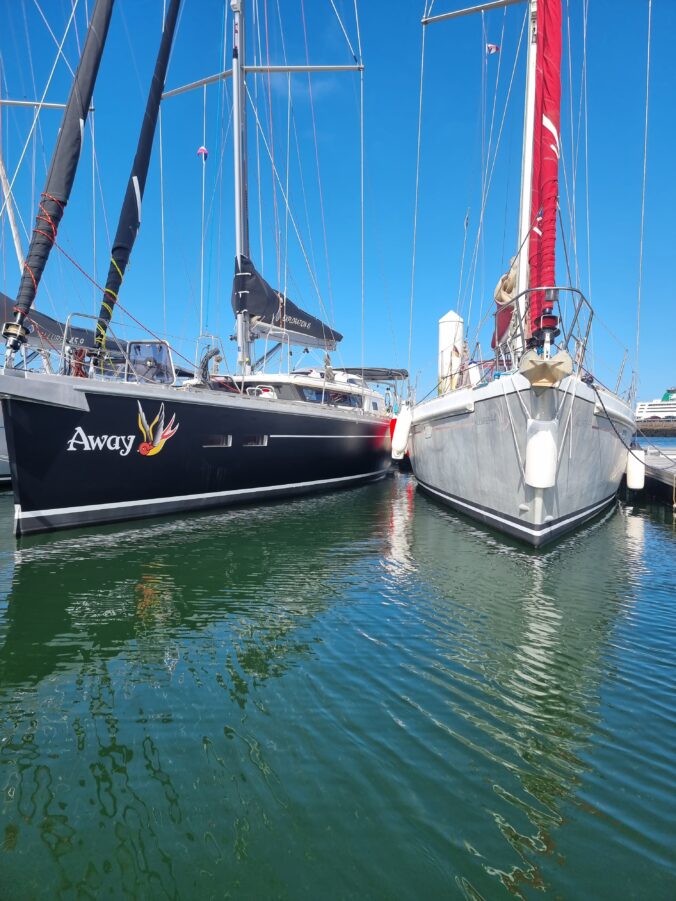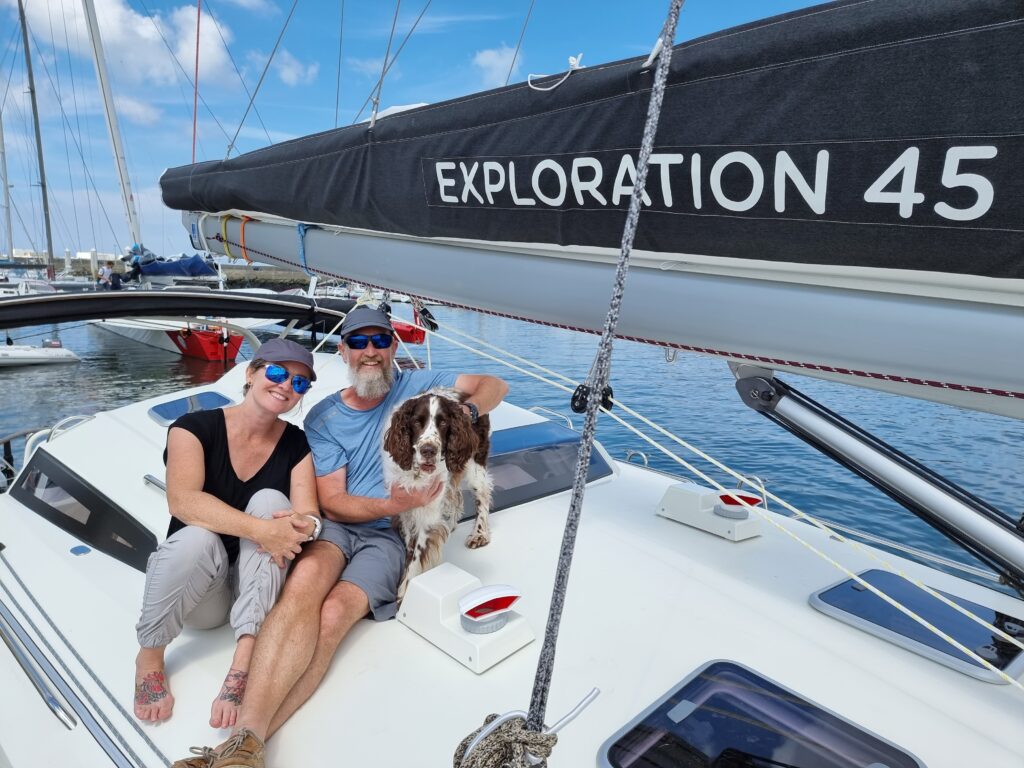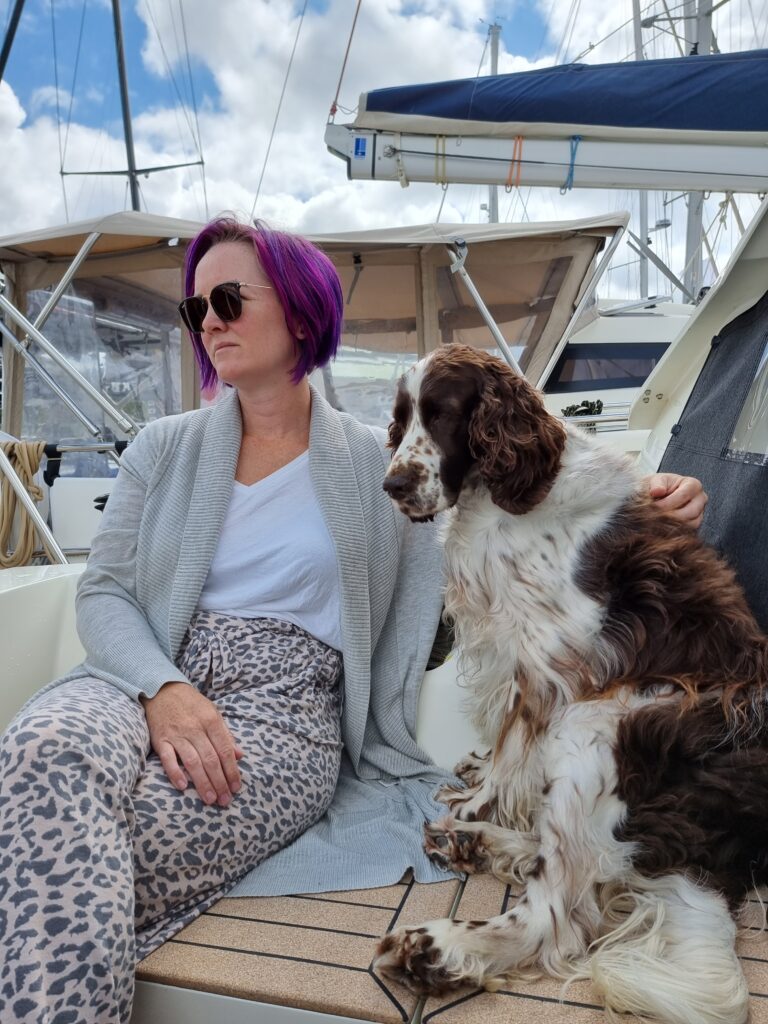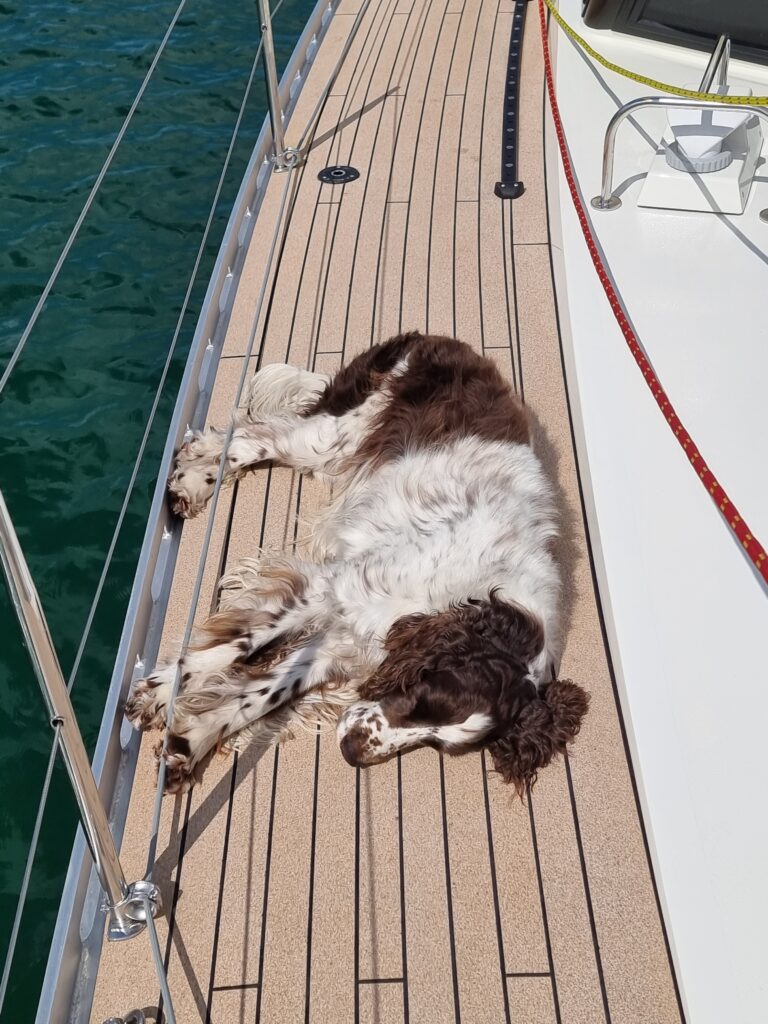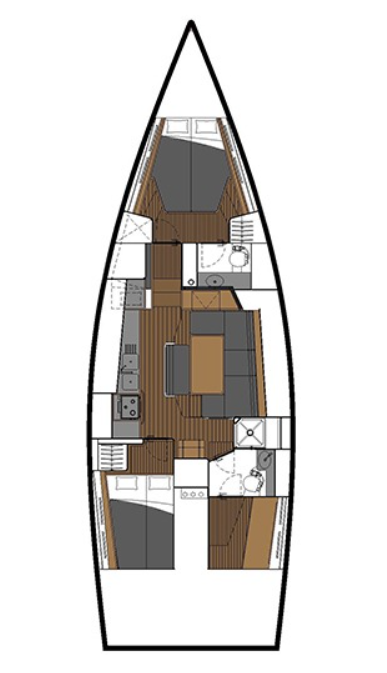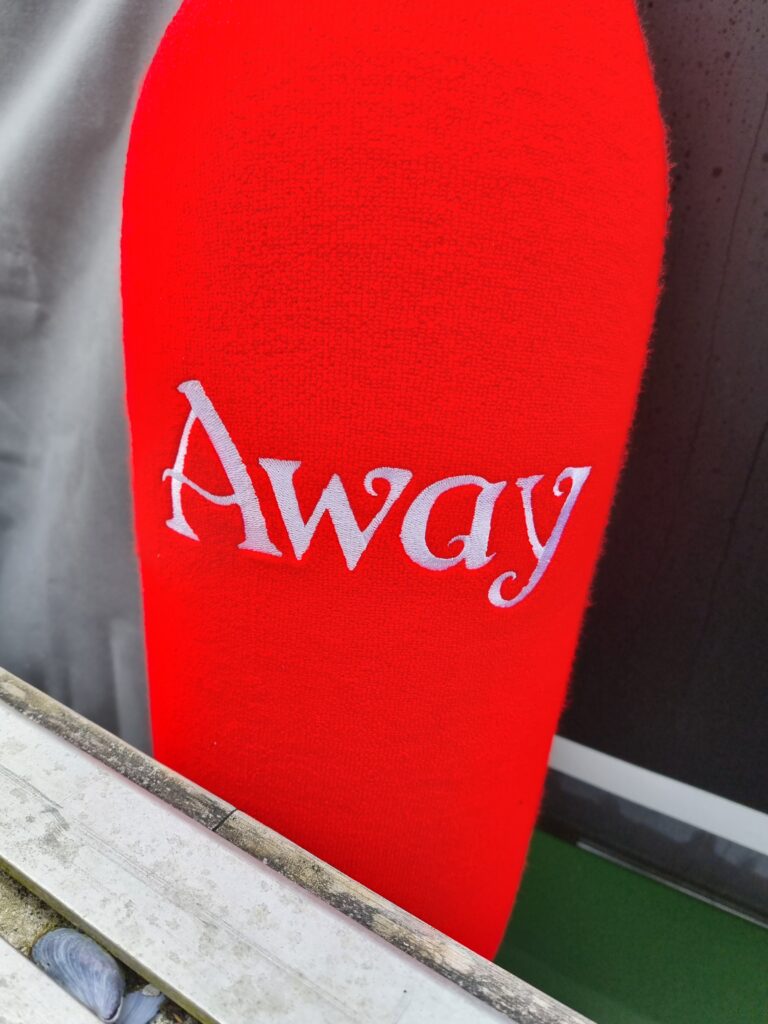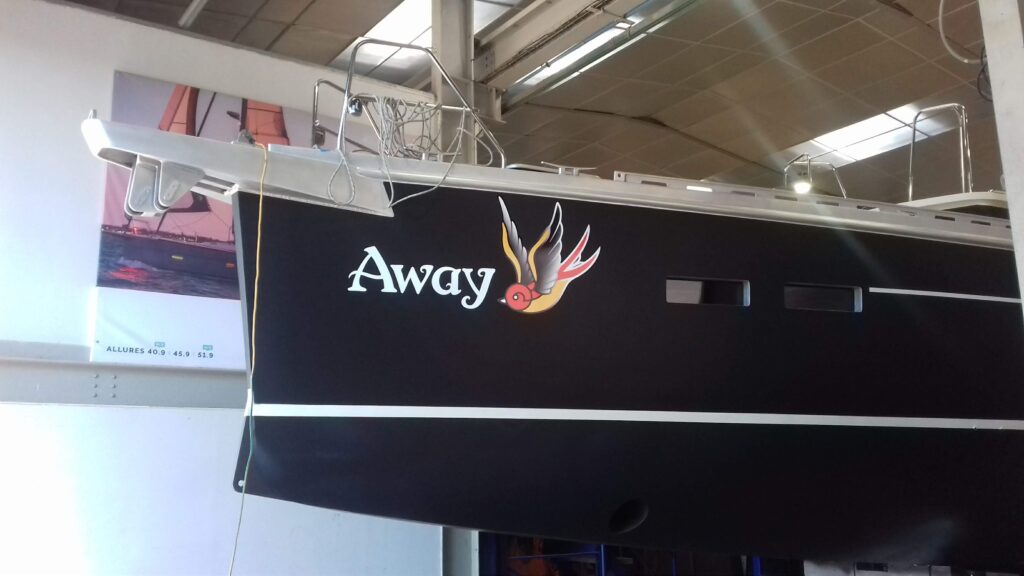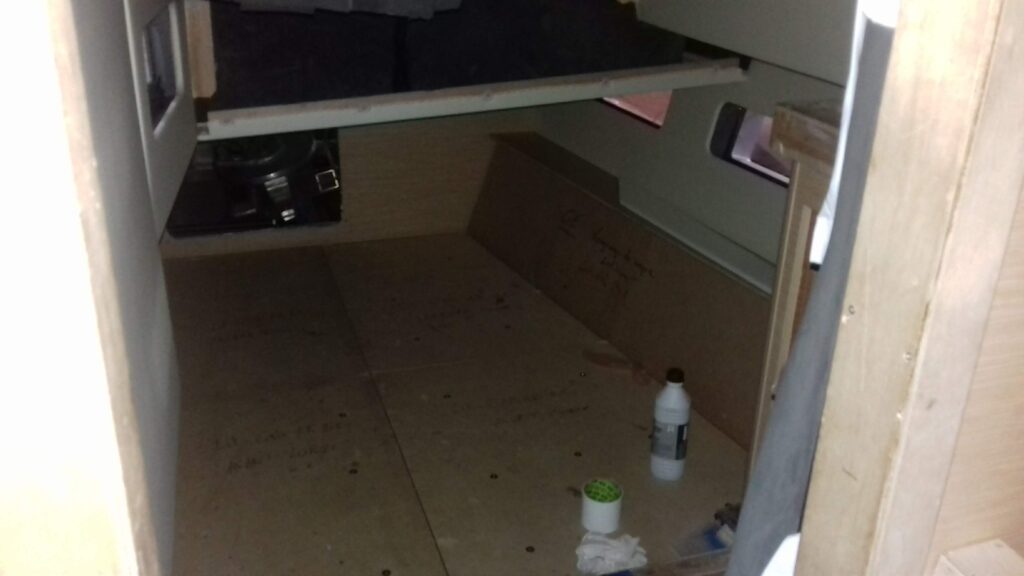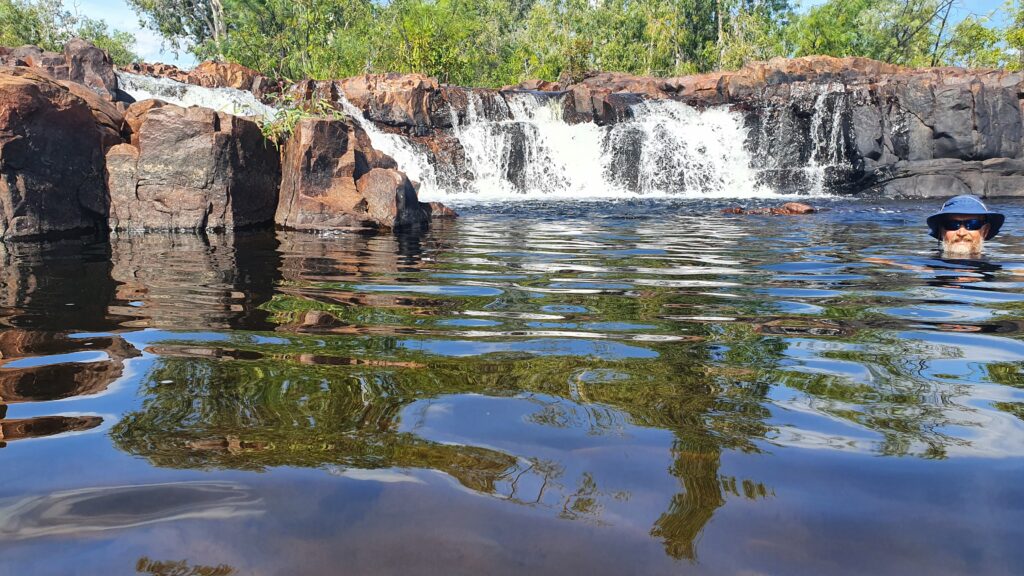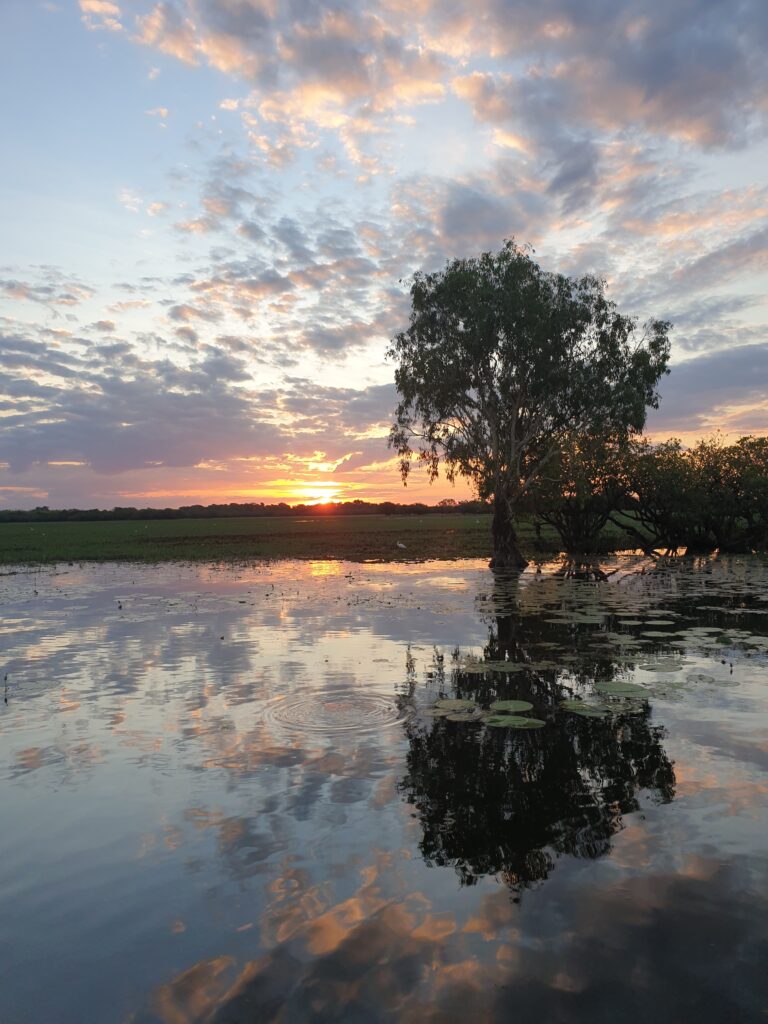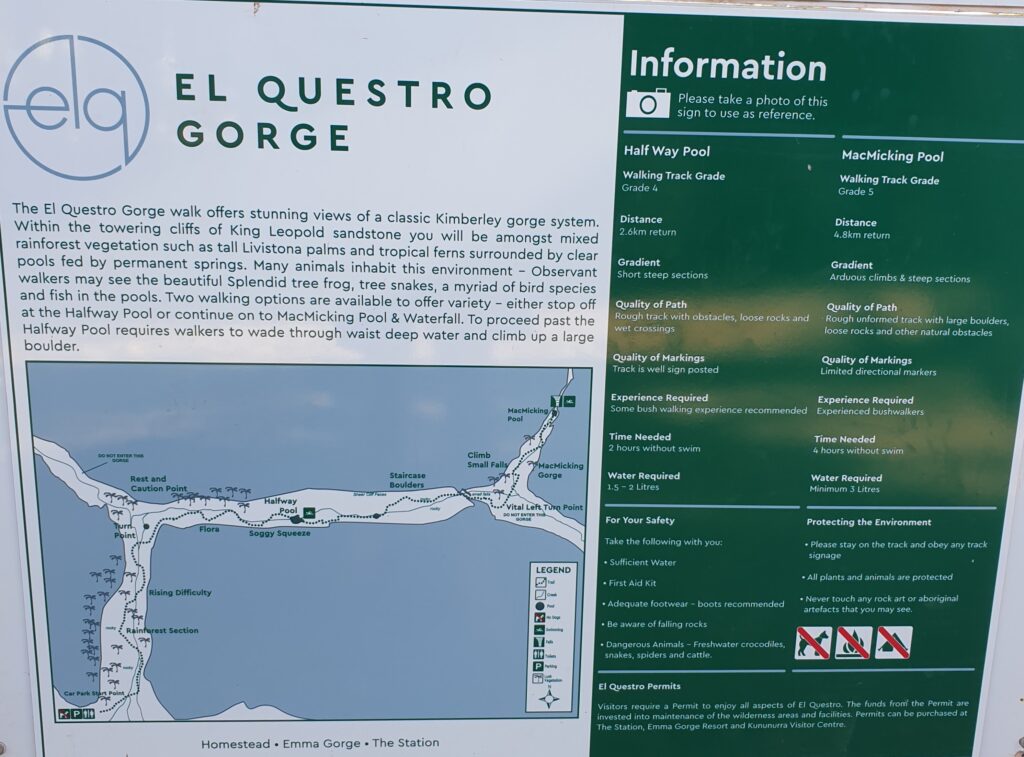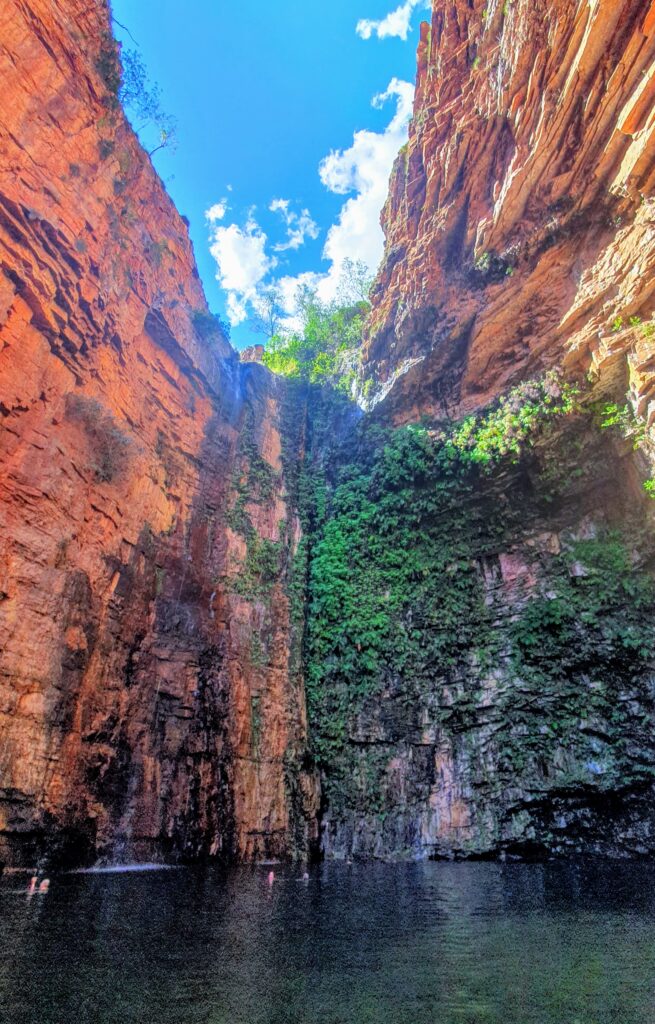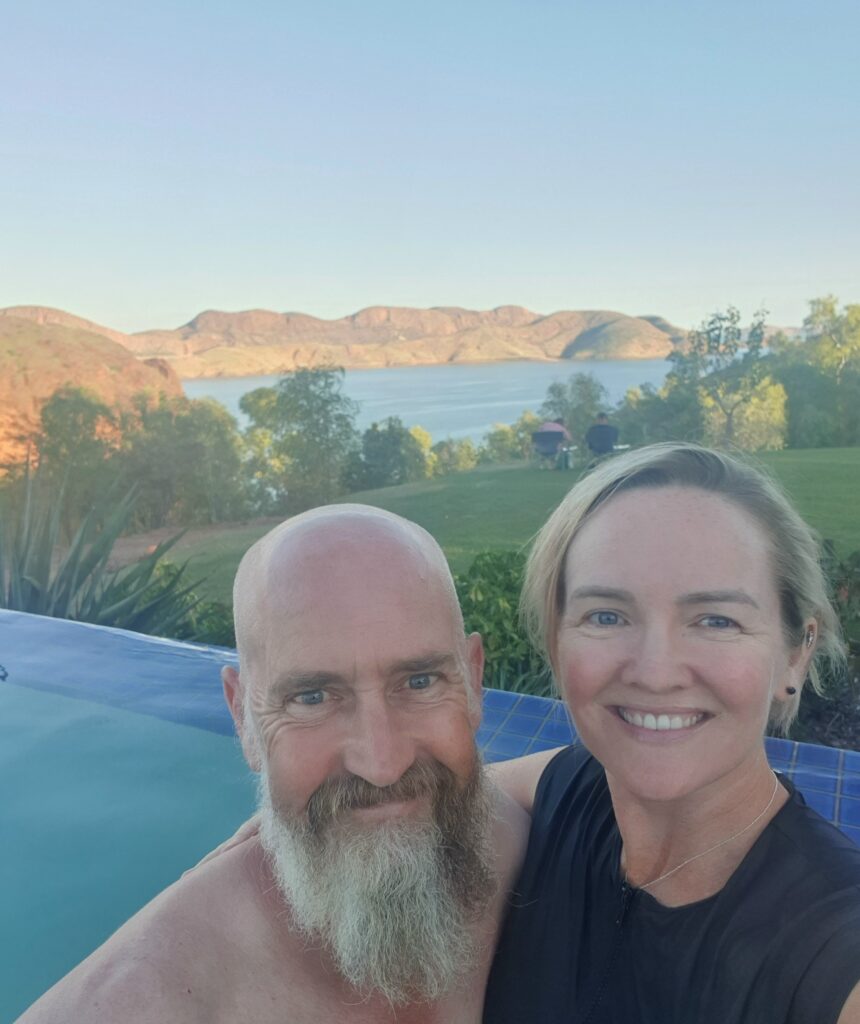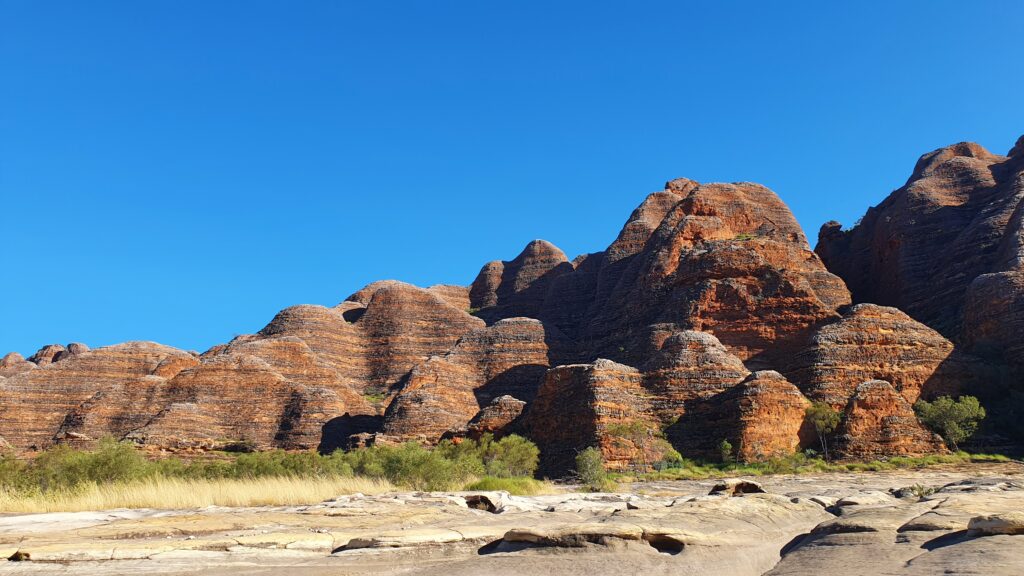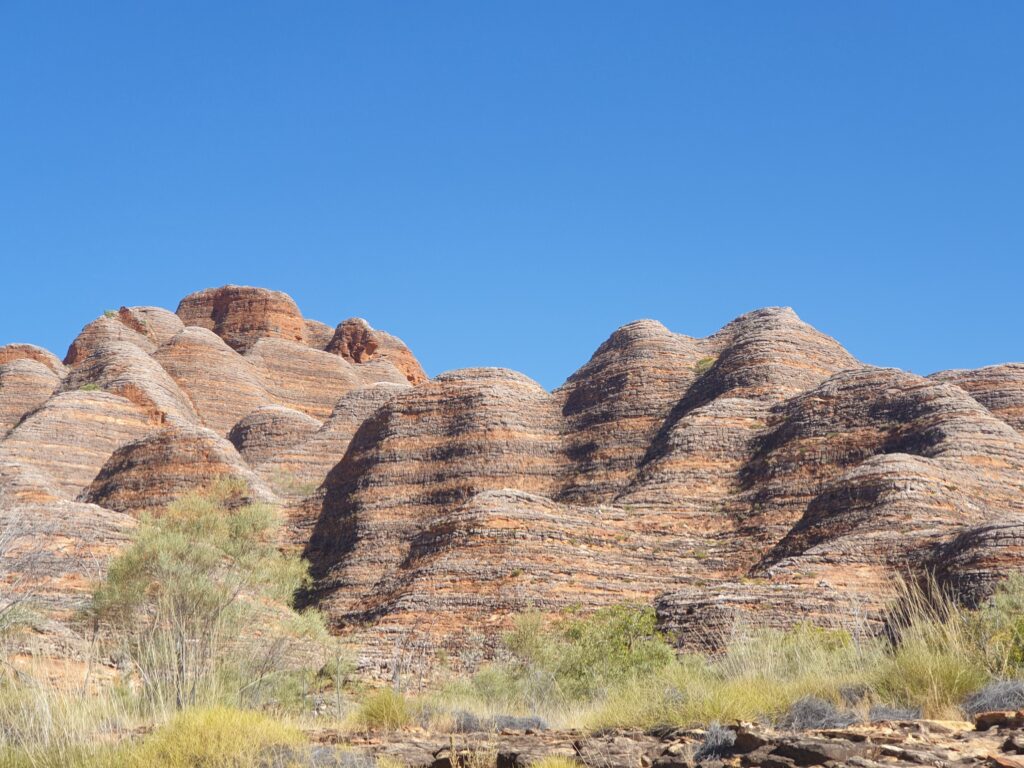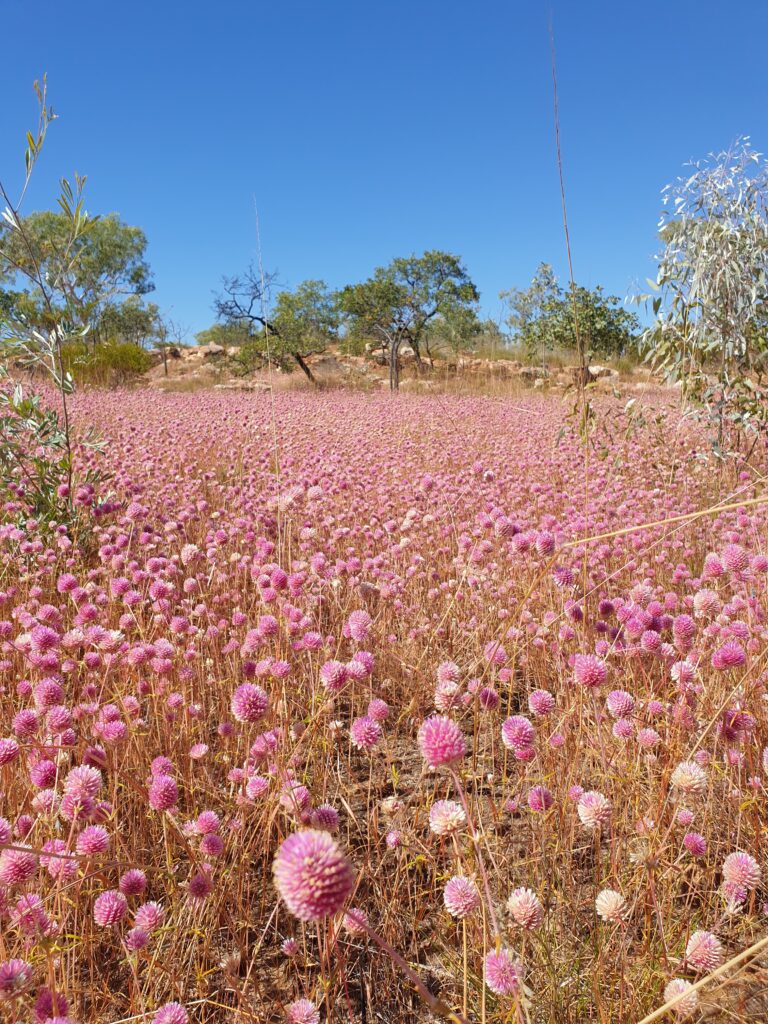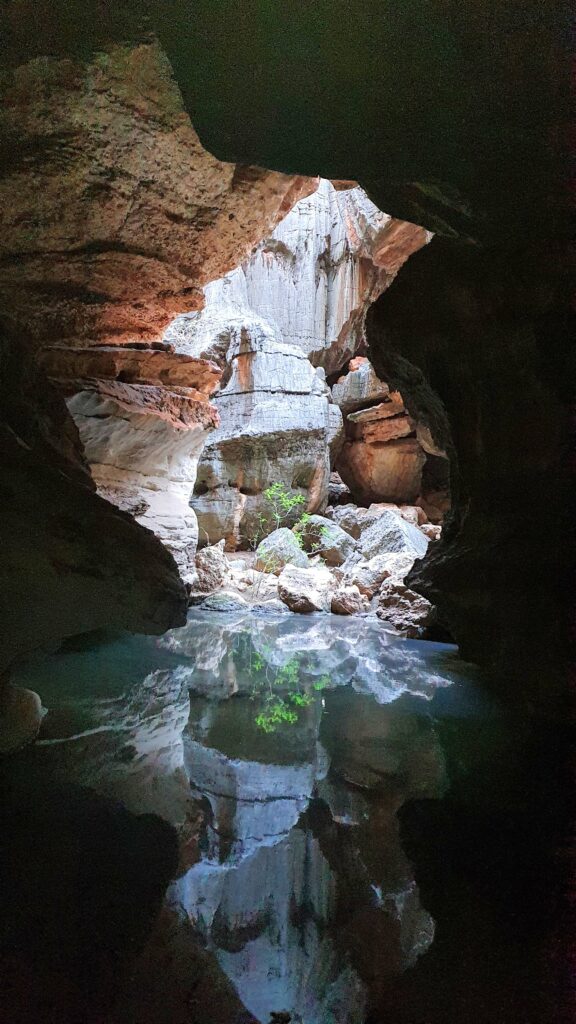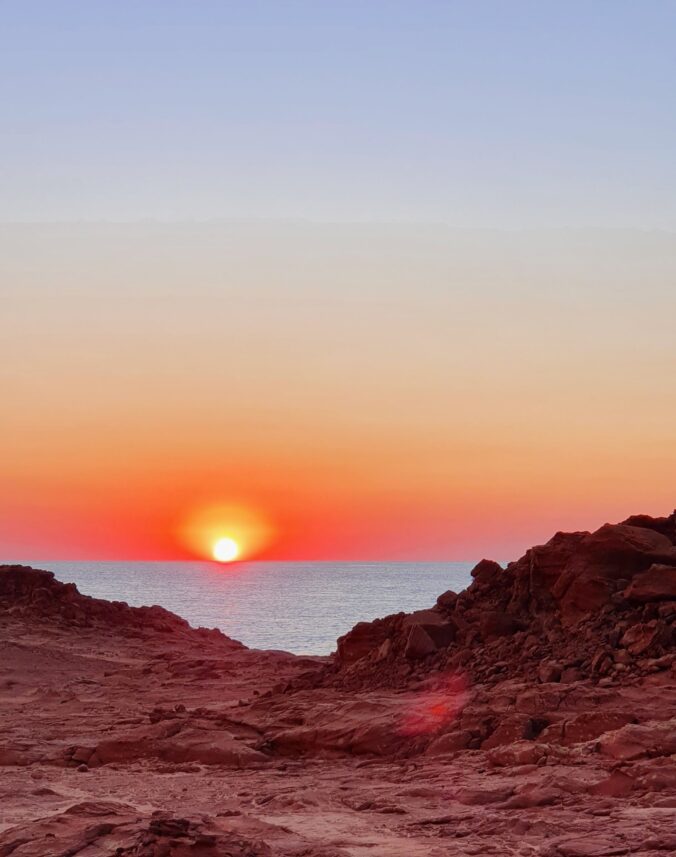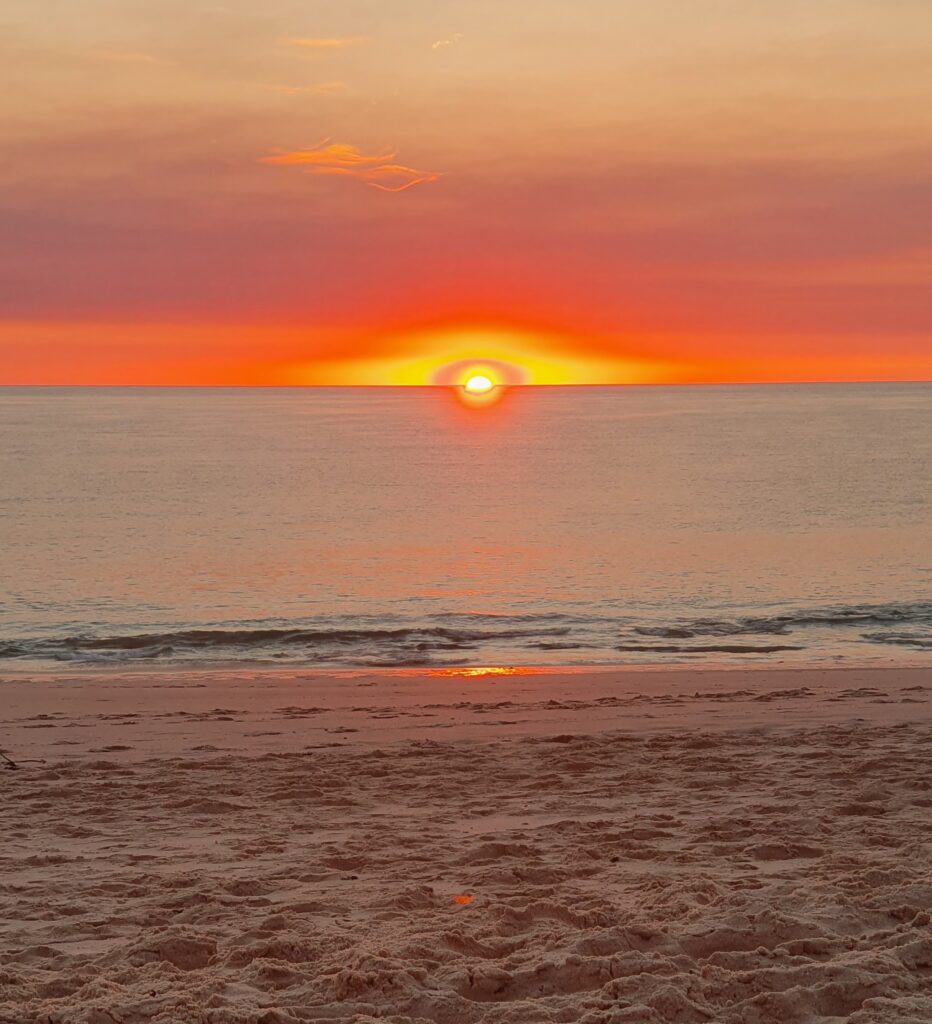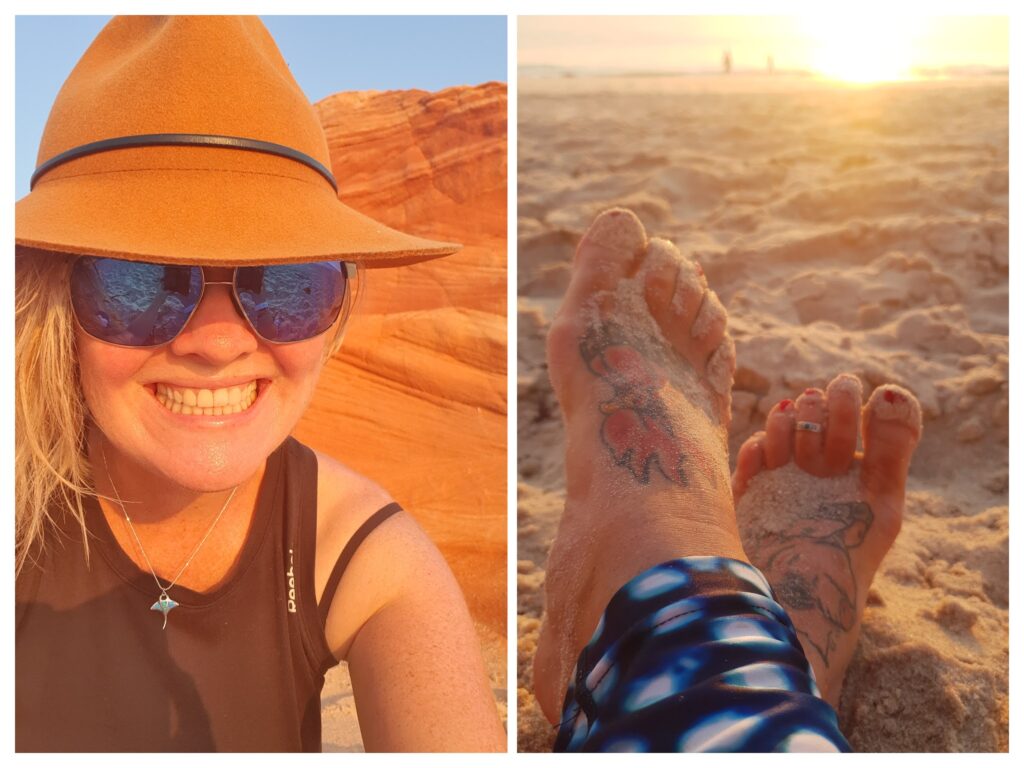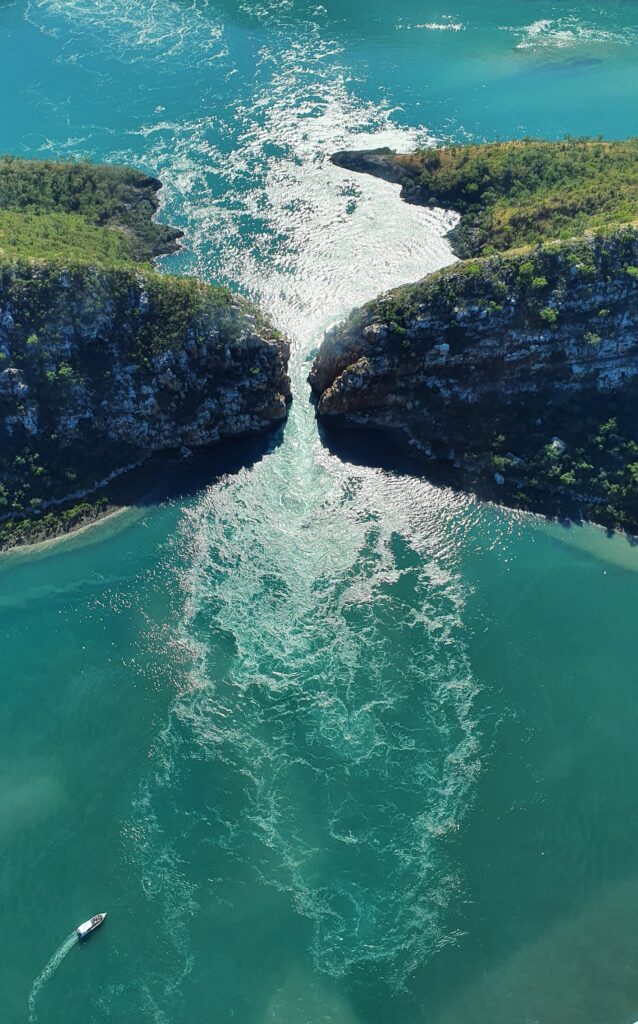
By Fi
We left, we left, we left, we left!!!! It was not a hard decision to leave the relative safety of the Cherbourg Marina, but it was one that seemed to take a lot of effort. It is quite hard to explain – its like the dock is magnetic and I guess because it is so safe and we were getting to know Cherbourg quite well, we were feeling comfortable, and we had to make that decision to again be uncomfortable, and to go into the unknown – but this has so many other benefits such as exploring, adventure and having new experiences. So one evening, we felt the winds and waves were okay for a sail away the following day. The following day came, and we thought the same thing about the next day, so we waited. Just till the next day 🙂

I navigated out of our berth, heart racing as I am still not comfortable with how big and heavy the boat is, and what the forces such as current and wind will do to the boat while it is stuck in a berth with only 1 or two lines attached, while Adrian is trying to detach them all in the most safe order. As it were, we were fine and we headed out from our berth at about 07:30 in the morning. Into the cloudy, cold, grey, summers day. We were headed to the Alderney race.

The Alderney race is a piece of water where the massive tides in this area run through. It can be extremely dangerous, and so understanding the tide and the wind is very important. It needs to be right. Battling against a 3 knot current, with the wind against it is uncomfortable, slow and can be very dangerous. We chose the time where the tide would push us through the race safely, and in relatively benign wind and tide conditions (around neap tides – the smallest tidal difference in the monthly calendar). Bernie likes to keep me company when we sail by sitting on me. At no other time does he do this. Perhaps he is satiating his nerves due to the race?

After dodging crab pots along the coast, we got to the race at about the right time. We still took a couple of hits from the current as it whirled around and grabbed the boat and spun it a little, but it definitely sounds worse than it felt. We were fine and have had worse. We headed south towards the Channel Islands.
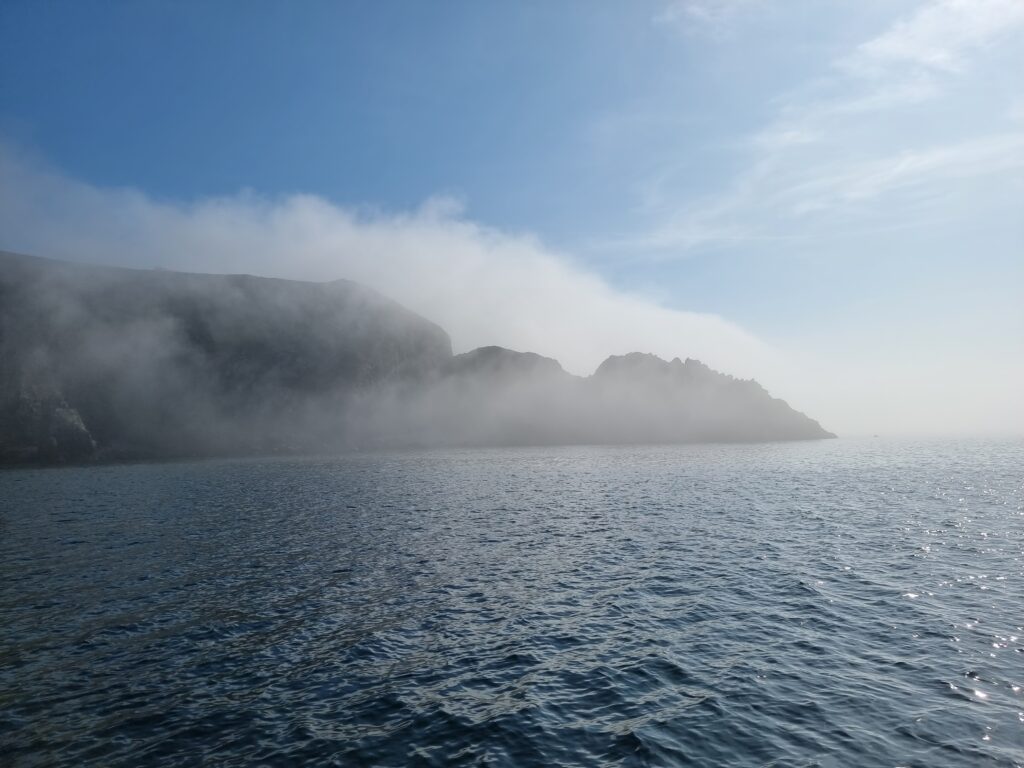
We skipped through the Balliwick of Gurnsey, and past Jersey as we would need to check in to the area – and with Bernie, plus Covid, it is all just too complicated – best we stay in France for a while longer. Granville was our ultimate destination, and required some very careful planning again. Some of the spots we managed to sneak a peak at are absolutely gorgeous.

I would expect as a totally novice sailor, this area would not be the one chosen from the outset. The tides here are among the largest in the world. Granville was a tidal marina, and to keep the water in the marina, a wall (AKA a “sill”) has been built on the sea bed, so that at low tide, the water stays in the marina. We needed to time this perfectly in order to not hit the sill.
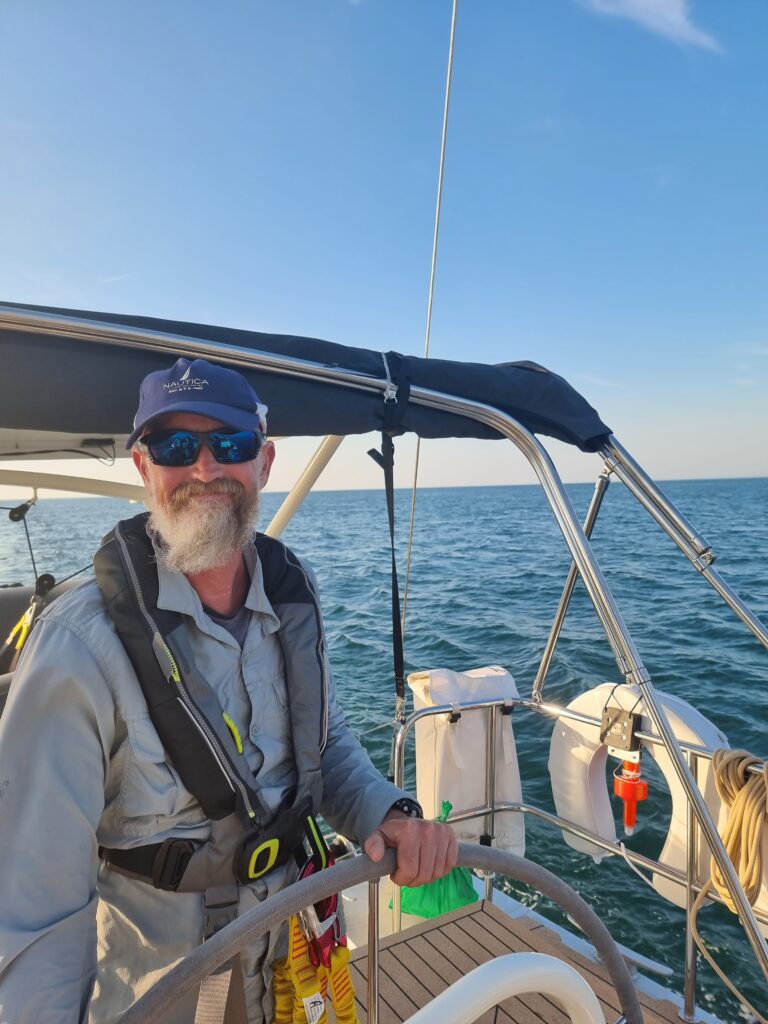
We called up Granville marina a few hours out from our arrival, and checked that they had space for a 45 ft heavy aluminium sailboat, and they did. They said they would even be there to help us dock – PHEW!!! When we motored in, we had enough water over the sill but the tide was running and there was a bit of current – so the extra help docking was welcome. We got into our berth okay, and to be honest, we went and found some wine as it had been a big trip to Granville and the tides and currents were massive, and sometimes it seems like the crab pots we are almost constantly dodging are actually attracted to our boat… It is tiring, and a tonic was in order!
With marina behind the sill, it means at low tide here, you can walk on sand, on the other side of the sill wall – I hope you can see the people walking outside the wall in these photos. When the tide is about 1/3 high, boats can go over the wall as there is enough water. So timing is everything.
On a side note, apparently we were the first Australian flagged boat they have had at the marina in their memory. We got a discount 🙂 We loved it here!



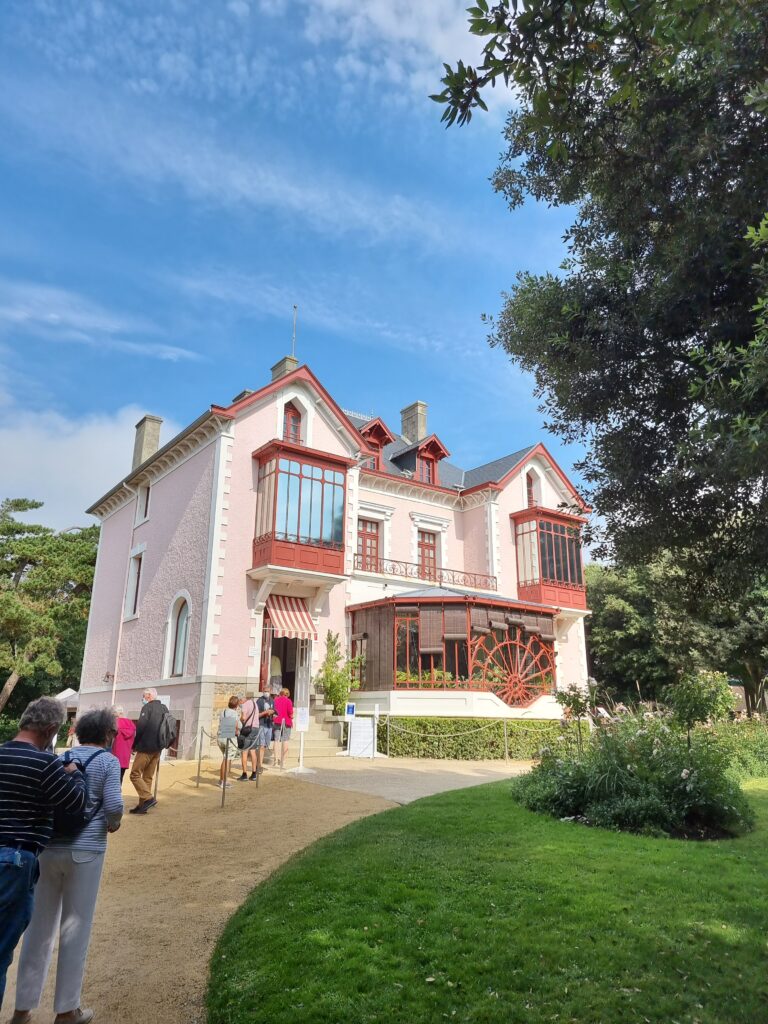
Granville is gorgeous!! It was the seaside childhood home of Christian Dior and also a popular seaside resort town – and we could understand why! It was HOT! We had come from the relative cool and dreary weather of Cherbourg, to essentially summer! It was 28 degrees C and beautifully dry. There is a large fishing industry here, and we enjoyed walking the ramparts of the old town on the hill. We also got to walk at low tide along the expanse of beach that appears. People are collecting mussels, oysters and whelks for their dinner – or for their restaurant – we weren’t sure, but enjoyed all the shell fish. This picture is of Christian Dior’s childhood home.




After a few days, and of course the inevitable boat jobs, we were again finding ourselves in the evening pouring over charts, chart plotters, cruising guides and the “Reeds Almanac” (aka the bible) and planning our next steps. Here’s the thing – we were planning to leave on the biggest tide of the month – called “Spring” tide and the difference in height was going to be 11m. You can imagine 11m of seawater moving in and out of the area here over a 6 hour period is going to create some serious water movement. The tides here are the 3rd biggest in the world, and we were planning to go out when they were literally at their biggest. So it was with some angst, that I was looking at the tide charts and possible routes.
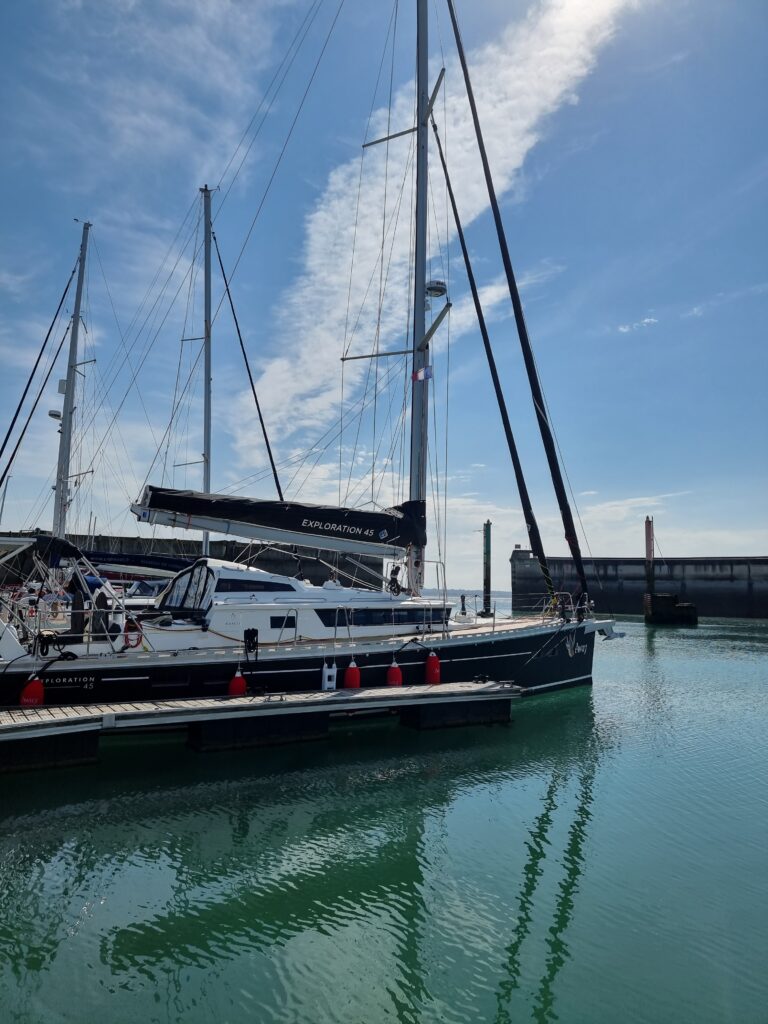
Leaving day came. The tide was high, the wind was from the south, and this meant that the relatively calm and safe marina that we were about to leave, was totally the opposite. The waves were coming in full force, the wind was gusting, the boats around us were bouncing around and lots of excited people were adding extra fenders and ropes to their cleats. And Adrian said to me “ok ready to untie the lines??”. To which I responded with the appropriate amount of… fear. But eventually, convinced that I was catastrophising and that we had options once we were out there, and that “out there” was better than bouncing around and hitting a dock, I untied the lines, and Adrian did a stellar job of driving out of the berth. Please note this serene photo of Away in its berth is not reflective of leaving day…

And yes, once we were out, things felt a lot better. The boat sails nicely, and we had a plan. Or so we thought. Some quick back of the hand calculations proved that I had overthought the planning, and my back of the hand calculations from the evening before were wrong by half – we were not going to make our intended destination with enough time not to hit the bottom on the way there – remember the tides are the biggest on this day, and timing was everything – and my maths let me down.

New plan – which was actually the old plan, the first plan we ever came up with, but then replaced with a dozen other plans, before settling on the current plan, which we are now replacing with the first plan – honestly, sailing is as much physical as it is mental – angsty!! Plan is now – lunch at a place called Iles Chausey (pictured) – a gorgeous outcrop of small islands, clear blue water and sunshine, followed by a leisurely sail south to St Malo, where we would time the possible 4 knot current against us perfectly to get into a massive lock to get into an inner harbour… Ok – to explain better….


Our boat sails nicely at 7 knots. We can go faster, we can go slower depending on conditions. 7 knots is nice. So imagine that we are going into a 4 knot current – we would only be going 3 knots which isn’t fast, or better yet that 4 knot current, is actually going side to side across us pushing us quickly sideways faster than we can go forwards – so yeah, I was concerned we wouldn’t make it so well. Already the day was pretty hectic, and here we were battling the massive currents. As it were, we saw a maximum of 2 knots going across us, and we crabbed our way in through the outside channels of St Malo. Its pretty weird watching a marker or a rock straight in front of you actually move sideways as you are technically sailing sideways due to the current. But we would make it to the big lock in time! Here is one of the obstacles we needed to dodge to get into St Malo.
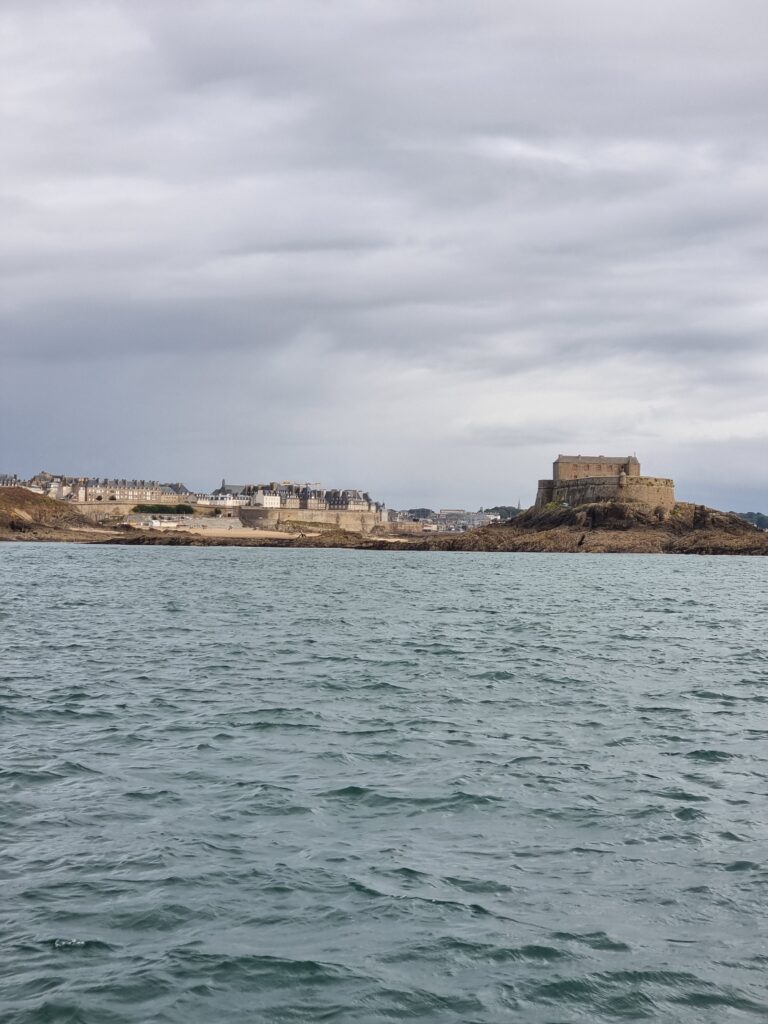
As we waited a few minutes for the lock to open, I prepared our lines, and tried to work out what would happen – at time of writing, having successfully navigated the lock, I’m still not sure what actually happened. As you can see from this photo, I was pretty confident St Malo was going to be worth the angst.
A lock is essentially a small piece of water with doors on both ends – in this case sea on one side, and a safe basin on the inside. The lock keeper opens the doors at the basin side where the water is high, and lets boats in to the lock. The doors close, and the water in the lock is let out. Once the water in the lock meets the water on the sea side of the lock (where we were waiting), the outside doors open, boats go out, boats (we) go in, and then the outside doors close, and the lock fills up with water, until it reaches the same level as the inside water, then we can go into the basin. Which is what we did….

… with a giant tanker and like 7 other boats…
Did I mention this day was already pretty angsty???????? !!!!!!

Into the basin we went, and Adrian again did an absolutely perfect job with docking. We got into a spot that probably shouldn’t take a boat our size, and we didn’t break anything or hurt anyone so it is all good.
We were exhausted – and had a quick dinner and bed – and we found a bottle of wine, aptly named – Angst.
Bernie did so well, I always amazed at how chilled he is, and how a few quick cuddles with him can settle any nerves I have about tankers being so close, and shouting French lock keepers and tide and wind and all the etcs that go with sailing.
What an experience.

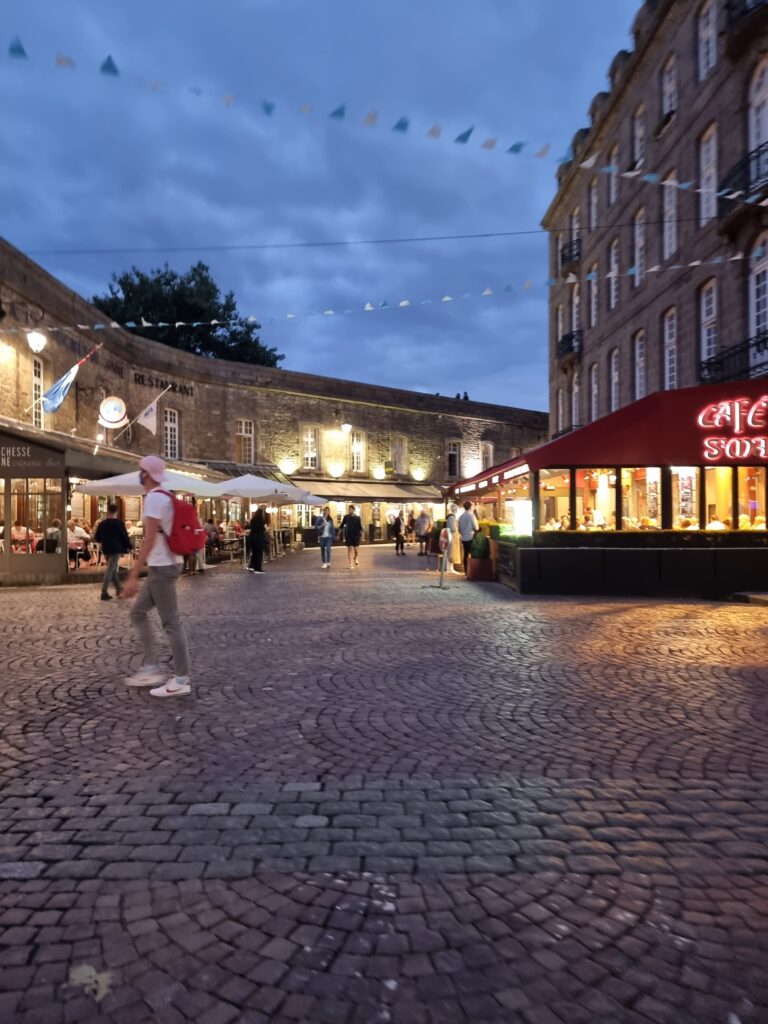
Our few days in St Malo will be next up 🙂 Then planning for the next!

